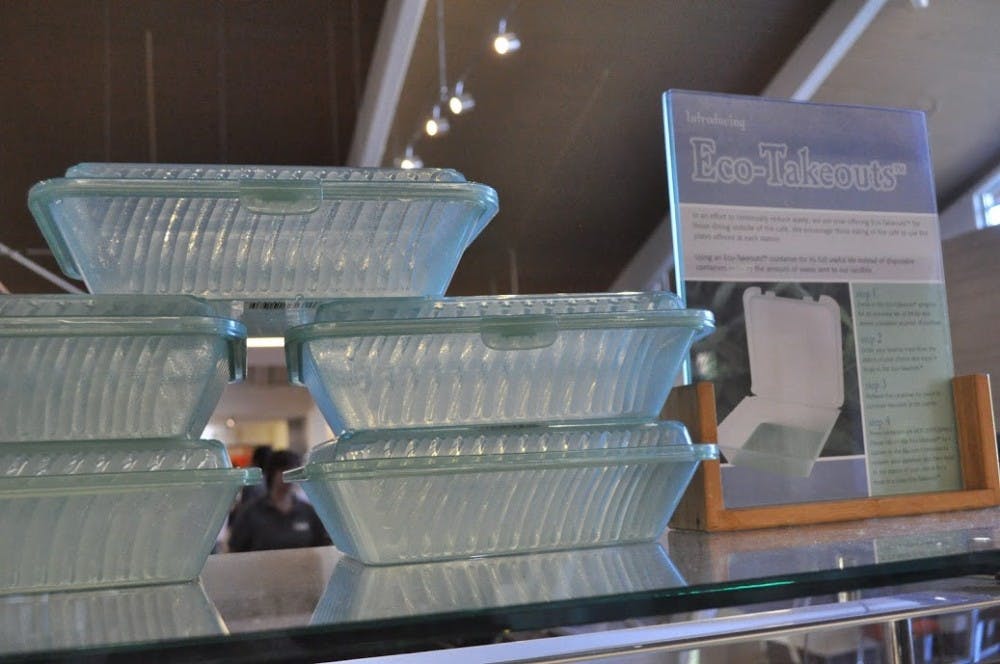Bon Appetit’s recently-launched Eco-Takeout reusable to-go box system has seen a steady stream of users since its launch just over two weeks ago, Bon Appetit Operations Manager Tamee Flanagan said.
The move by Bon Appetit was an effort to increase sustainability and reduce waste, but some students say the system has had a rough start.
Flanagan, who is in charge of the Eco-Takeout system, said about 100 containers have been sold so far and she is planning to order another 150 boxes to keep the system going.
Students can buy into the program by purchasing a carabiner clip for a one-time fee of four meal points at the Starbucks at The Commons. The clip can then be exchanged for an Eco-Takeout.
After they have been used, the containers can then be returned to The Commons to be washed, and students will receive a carabiner in return.
But senior Anthony Ng said he thinks the number of containers sold is low compared to the population of the student body. Ng is a sustainability coordinator for Haggerty and Tyson halls and a senior environmental science major with minors in sustainability and environmental ethics and policy.
Ng said that while he knows Bon Appetit has good intentions, the way the containers were rolled out sent mixed messages.
On the day the Eco-Takeout were introduced just after Labor Day, Ng said he saw that everyone in The Commons was using paper plates and one-time-use disposable containers, which he was told by a Commons worker was because the dishwashers had broken.
“I just thought that Bon App was sending the wrong message about what they wanted me to do," Ng said. "The message I got was that, ‘We don’t really care.’ I think they should have postponed it until the dishwashers were fixed.”
Kirk Mustain, general manager for Bon Appetit, could not be reached for comment.
Ng said part of the issue with the boxes so far is that the product is not offered at the Pilot House, where he said he sees most people getting to-go food items.
“I went to The Commons to get an Eco-Takeout (container) and came all the way back to the Pilot House with it in order to get my food to-go,” Ng said. “And when I gave it to the food servers, they said, ‘What is this?’”
Flanagan said the Eco-Takeout boxes could be sold in the Pilot House, but that there are no plans for that yet.
Ng said he and other sustainability coordinators have been promoting the containers by word-of-mouth, at ecology club meetings and by showing slides about them before CPB movies, but said it just isn’t enough to get people to use them.
A part of the problem, he said, was that people did not know how to buy or use the containers.
“I just want this to be successful and I don’t want this to be like their past campaigns where this fizzles out,” he said. “I want them to really try and they’re not trying hard enough. I’m telling my friends about it, but it’s not enough. I only know so many people.”
He suggested that Bon Appetit create a video or place large posters in front of the cashiers to educate students more effectively.
The mission of the company, according to the Bon Appetit website, is: “To educate consumers, institutional purchasers and chefs about how their food choices affect the global environment, local economies and the quantity and quality of healthy food, now and for future generations, and to inspire them to make change.”
“The whole reason Bon App exists, their whole mission, is to have sustainable food, which is why it is so important that they take this on,” Ng said.








